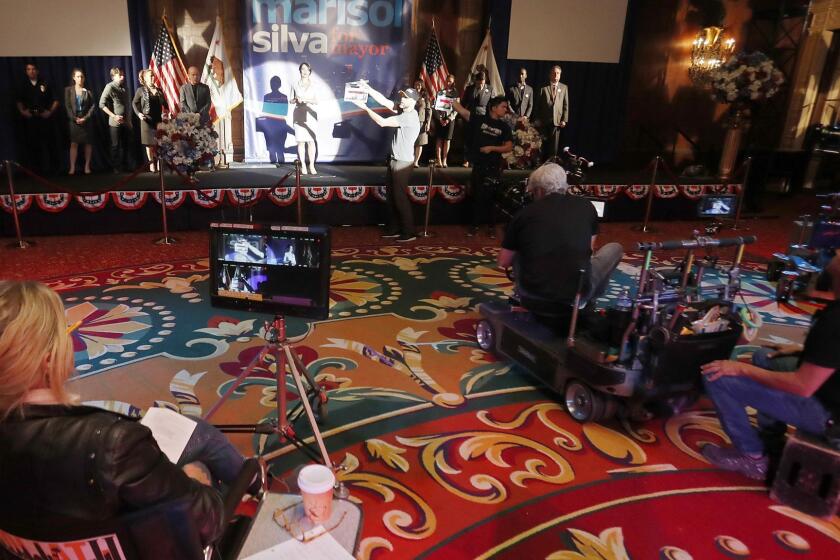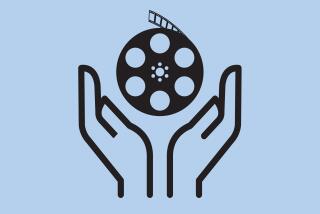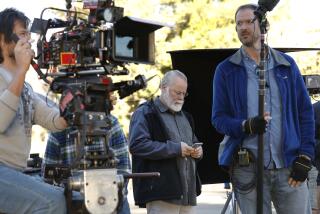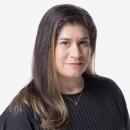Hollywood is reopening with detailed new rules for productions amid COVID-19
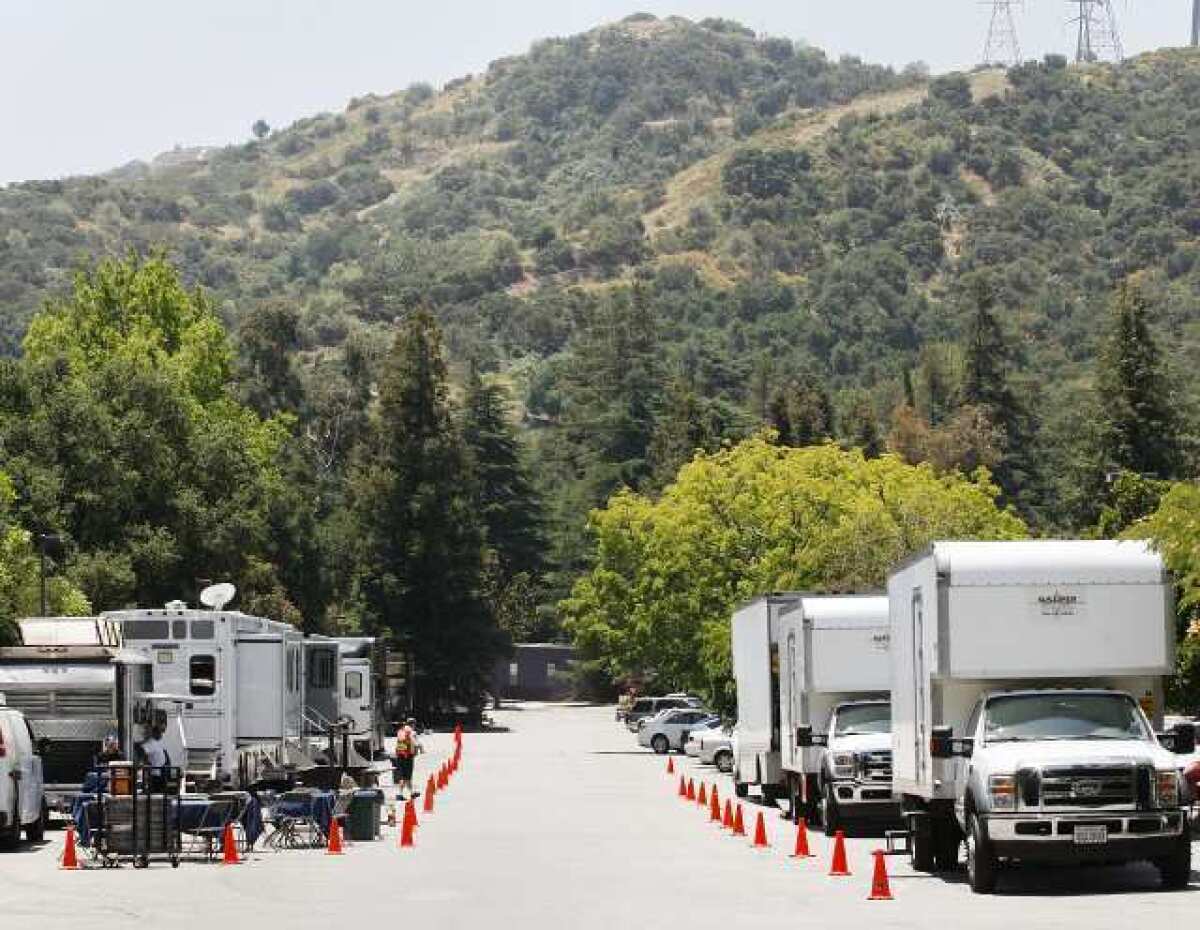
- Share via
Hollywood’s unions have published a detailed breakdown of guidelines that television and film productions will be expected to follow in coming months as the industry works to get back on its feet after a three-month COVID-19 pandemic shutdown.
The joint report from the Directors Guild of America, SAG-AFTRA, IATSE and the Teamsters outlines what will be required of productions that want to begin filming again, with such restrictions expected to continue until there is a vaccine for COVID-19 or other developments that would reduce fears of spreading the coronavirus.
The report, titled “The Safe Way Forward,” creates the new on-set role of health safety supervisor (and associated department), who will oversee the implementation of the guidelines. Frequent COVID-19 testing will be required, as will the creation of zones to provide maximum protection to those in the crew and cast who can’t wear protective equipment or maintain social distancing.
The guidelines build on the group’s white paper delivered to California‘s and New York‘s governors earlier this month as well as Los Angeles County guidance this week that effectively gave the green light for music, film and television productions to resume. With some productions already underway in California and other states, the new framework is expected to be implemented nationally, but many in the industry expect that it could take weeks before film production resumes on large productions and at full scale.
Los Angeles County released its protocols for film productions to allow Hollywood to return to work beginning Friday. But the requirements, which discourage fights scenes or the use of large crowds, may be hard for productions to follow.
“People in the industry can take great comfort from the report,” said Duncan Crabtree-Ireland, SAG-AFTRA’s chief operating officer and general counsel, who is leading the union’s safety and reopening initiative, in an interview. “What’s laid out here from our unions, representing the vast majority of people directly involved in production, are guidelines that we believe can be — and will be — practically implemented.”
The question remains how producers will manage the increased costs and time scale necessary to implement the changes. The industry should expect unions to provide more specific details for different production departments as time goes on, Crabtree-Ireland said. He added that the union has been working with productions already underway, including a feature film in California and commercials in Georgia and Utah, to ensure safety.
“In these fast-changing times amid such a complicated virus, figuring out how to get that done right was no easy task,” said Thomas Schlamme, the Directors Guild of America president, in a statement. “We knew the only way forward was to consult with leading medical experts and let science guide us to the right approach for our unique work environments.”
Filmmaker Steven Soderbergh on the eerie predictive powers of his 2011 pandemic procedural ‘Contagion’ and the plans underway to get Hollywood back to work.
All productions must maintain closed sets with no visitors allowed. Shoot days will be limited to 10 hours to allow time for the extra preparations required. There are instructions for every element of production: the setup of production offices, location scouting, travel, castings and catering. Also included are guidelines to facilitate the movement of cast or crew members with disabilities.
Critically, the new health supervisors, according to the unions, “cannot be overruled” in their attempts to implement COVID-19-related safety measures. The guidelines create a system of zones on set, with performers most at risk of infection because of their proximity to one another.
“Unless all stories in a pre-vaccine world portray every character wearing PPE and standing six feet apart behind plexiglass, the Zone System is how we believe we can stay as safe as possible,” according to the report.
The requirements will put performers and crew members who work closely with them in a so-called Zone A and urge avoiding clusters of crew around unprotected performers. People in that zone will need to be tested at least three times a week. And for those involved in scenes with close contact, potentially daily testing will be needed.
Workers in Zone B, where physical distancing and masks can be worn, such as a production office or truck, will be tested once a week. With testing also required before people can move between zones, crews may be able to use rapid testing that can yield results in 60 minutes for times (ideally rare, the report states) when producers need to bring people from Zone B to A without the usual screening.
“It’s a lot of testing, and it still doesn’t guarantee a virus-free set,” the report continues. “What the Zone System tries to limit is the possibility that someone contracts COVID-19 while at work, but it should be understood that as long as the cast and crew are going home at night and on the weekends, they are open to contagion, which is what all the testing is for.” The report also notes that unions have been advised by health specialists that “testing scarcity will be resolved in the near future.”
The testing recommendations are based on models provided by Jeffrey Shaman, an environmental health scientist at Columbia University. Increased testing frequency reduces the risk of acquiring infection, according to the report: Should someone with COVID-19 come to the set, weekly testing for the cast and crew will greatly reduce the risk of additional cases. Testing every three days, which will be required in Zone A areas, reduces the risk further; daily testing largely eliminates it, the report says.
Not everyone is convinced the plans will be enough. “What is still missing are protocols specifically for documentary and other nonfiction shows working in low-to-no budget locations that are often smaller and not easily regulated,” according to a statement from producer Johanna Vanderspool, lead organizer of the NonFiction “Union,” an advocacy coalition for nonfiction freelancers. “Many of these documentary and reality shows (across all genres) often don’t allow for reasonable schedules, staggered meal times or ‘health coordinators.’”
More to Read
Inside the business of entertainment
The Wide Shot brings you news, analysis and insights on everything from streaming wars to production — and what it all means for the future.
You may occasionally receive promotional content from the Los Angeles Times.
